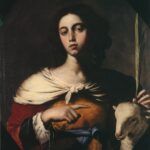If you’ve ever visited an art gallery or museum, you’ve surely noticed a peculiar trend: cherubs, those adorable and plump angelic creatures, are constantly nude. Regardless of the context, climate, or occasion, these little angels seem to have a true aversion to clothing. But why? Why does art persistently depict cherubs as committed nudists?
To answer this question, we must delve into the iconography and symbolism of Renaissance and Baroque art. Cherubs, derived from the “cupids” of ancient Rome, have become a staple in Christian art. They represent innocence, purity, and, in a sense, heaven itself – a place where human concepts of modesty and shame hold no sway. Thus, their nudity is not so much a stylistic choice as it is a visual representation of their divine and uncorrupted nature.
But there’s more to it. Nude cherubs are also incredibly useful from an artistic standpoint. They serve as a perfect excuse for the artist to showcase their skill in rendering the human form. Additionally, their nudity allows the artist to play with light and shadow, creating visual effects that captivate the viewer’s gaze.
However, from our modern perspective, one can’t help but wonder if cherubs couldn’t have benefited from a bit of clothing. Imagine being a cherub in a painting by Paolo Veronese, suspended in the air in the middle of a winter scene, or among Caravaggio’s cherubs, engaged in a celestial skirmish. Wouldn’t it have been more practical to wear at least a pair of undergarments?
But it seems that for cherubs, fashion is secondary to function. Whether they’re playing a lute, shooting arrows of love, or simply frolicking in the sky, these little angels appear to be completely comfortable in their nudity. And perhaps there’s a lesson to be learned here. In a world obsessed with image and fashion, cherubs remind us that sometimes it’s nice to simply “be,” without worrying about what to wear. Or maybe they’re just trying to save on the laundry bill. Who can say?












